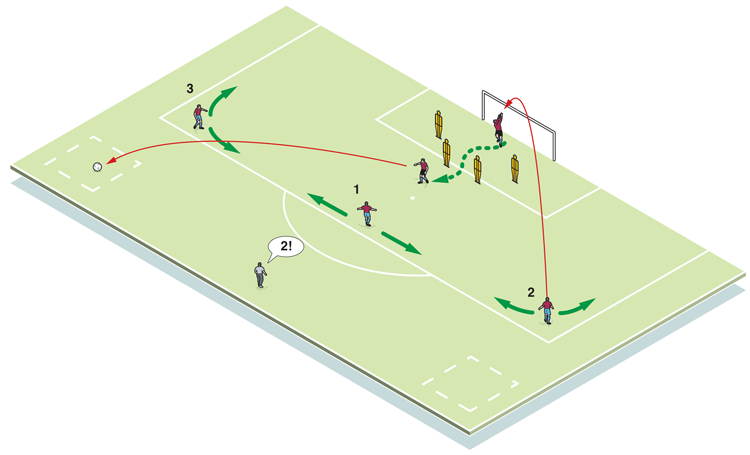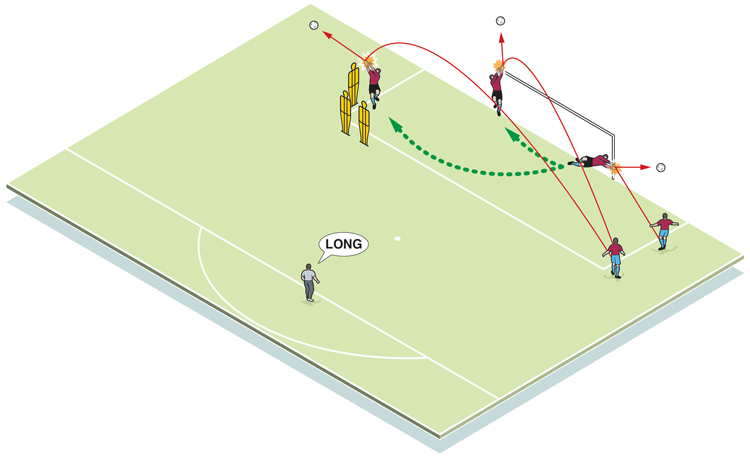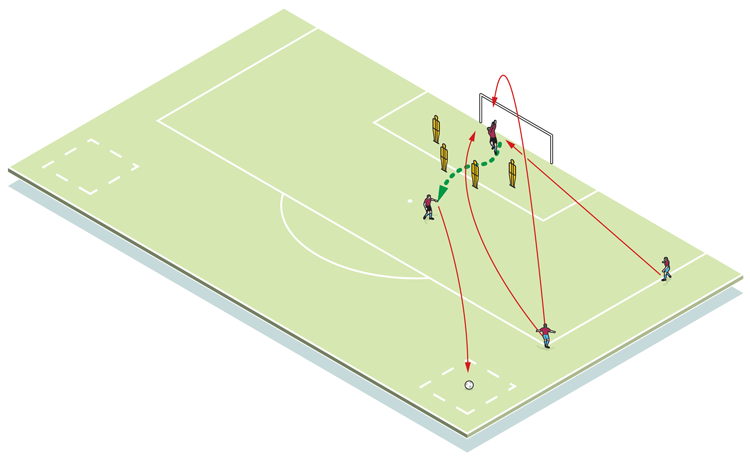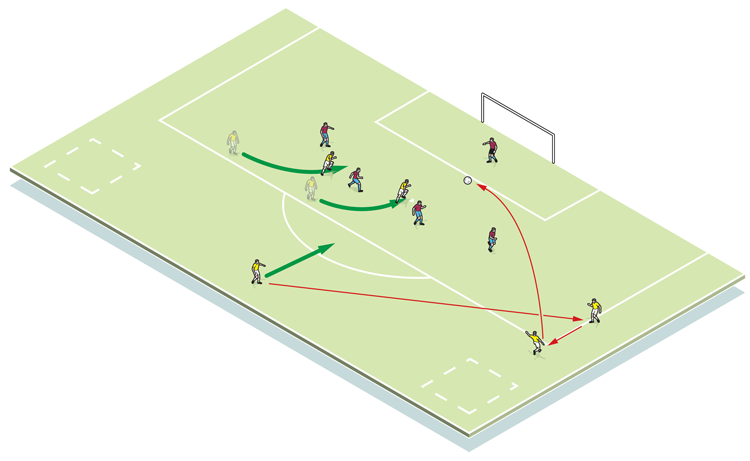




OUR BEST EVER OFFER - SAVE £100/$100
JOIN THE WORLD'S LEADING PROFESSIONAL DEVELOPMENT PROGRAMME
- 12 months membership of Elite Soccer
- Print copy of Elite Player & Coach Development
- Print copy of The Training Ground
You are viewing 1 of your 1 free articles
Dealing with crosses
| Area | Final third |
| Equipment | Cones, balls, mannequins |
| No. of Players | Up to 10 |
| Session Time | 10mins per practice |
This session is designed to help goalkeepers deal with crosses of different heights, power and trajectories. It will not only show them the technical aspects of dealing with the cross, but also how to use momentum and power when working in and around opposition bodies.
We practise this because in the modern game it is becoming more and more important for keepers to show speed, athleticism, power and agility.
For those aspiring to reach the top level, all these attributes are needed when dealing with crosses in congested areas, particularly those balls delivered with pace and accuracy.
What do I get the players to do?
Standard practice
Setting up as shown [1], on the coach’s call one of the three servers throws a ball over the mannequins for the goalkeeper to catch. The keeper then breaks through the line of mannequins and throws the ball so it lands in either of the coned boxes outside the penalty area.
Deliveries into the keeper continue with servers taking turns to throw on the coach’s call. The servers can adjust their positions around the 18-yard box and should vary deliveries in terms of pace, height and bounce.
1

What are the key things to lookout for?
The keeper must adjust his starting position in line with the relevant server. He must assess the flight of the ball and take off from his non-kicking foot, attack the delivery in the air to create momentum and power in case of a collision with another player. The distribution must be quick and positive.
Six-yard box practice
Setting up, as shown [2], in this practice the keeper faces a series of balls into the six-yard box.
First the keeper steps towards his near post and takes a low volley from server 1 into the chest or pushes the ball around the post, immediately resetting to face the next ball.
Server 2 then throws a ball over the keeper’s head. He must follow its path, deciding whether to catch it or punch it. The coach can call for the type of delivery. The servers should vary the power and angle of each delivery.
2

What are the key things to look out for?
The keeper needs to use short, sharp feet into the near post, adopting a good set position to receive the volley. He then opens his stance to face play.
For the second ball, he must assess the flight and use short, sharp, quick steps,moving sideways, not backwards, so he still has any obstacles in view.
If he decides to punch, he must clear with height, width and length, keeping an eye on the ball at all times. If catching at full stretch, he must go down with the ball to protect it.
Side practice
This time the servers are working from the side of the penalty area, delivering a series of crosses in and around the mannequins with pace, as shown [3].
The keeper adopts a positive starting position on the front foot, and must make a positive early decision if coming for the ball, assessing its flight all the time.
Target zones are added to practise distribution, and to ensure a perceived target for a quick breakaway
3

What are the key things to look out for?
The keeper must attack the ball as early as he can to ensure attackers don’t nip in front, making sure again that he drives through the ball to maintain power and aggression.
Opposed crosses
Now we introduce attackers and swap the mannequins for real defenders, making this a 5v4 attacking overload situation.
The midfielder begins, feeding in a firm pass to one of the wingers, before heading into the box as an additional attacker. The wingers combine freely to fashion a cross into the box, as shown [4].
As before, the keeper adopts a positive starting position in relation to the ball. This time, when he gathers the ball, he throws it out to a full back.
4

What are the key things to look out for?
We are looking for the keeper to combine all of the technical and tactical elements learnt from the earlier drills in this practice, except now he needs to communicate at all times with his defenders as well.
Related Files
Editor's Picks
Attacking transitions
Deep runs in the final third
Using the goalkeeper in build-up play
Intensive boxes drill with goals
Penetrating the final third
Creating and finishing
My philosophy
Pressing initiation
Compact team movement
Coaches' Testimonials

Alan Pardew

Arsène Wenger

Brendan Rodgers

Carlos Carvalhal

José Mourinho

Jürgen Klopp

Pep Guardiola

Roy Hodgson

Sir Alex Ferguson

Steven Gerrard
Related
Coaches' Testimonials

Gerald Kearney, Downtown Las Vegas Soccer Club

Paul Butler, Florida, USA

Rick Shields, Springboro, USA

Tony Green, Pierrefonds Titans, Quebec, Canada
Join the world's leading coaches and managers and discover for yourself one of the best kept secrets in coaching. No other training tool on the planet is written or read by the calibre of names you’ll find in Elite Soccer.
In a recent survey 92% of subscribers said Elite Soccer makes them more confident, 89% said it makes them a more effective coach and 91% said it makes them more inspired.
Get Monthly Inspiration
All the latest techniques and approaches
Since 2010 Elite Soccer has given subscribers exclusive insight into the training ground practices of the world’s best coaches. Published in partnership with the League Managers Association we have unparalleled access to the leading lights in the English leagues, as well as a host of international managers.
Elite Soccer exclusively features sessions written by the coaches themselves. There are no observed sessions and no sessions “in the style of”, just first-hand advice delivered direct to you from the coach.







